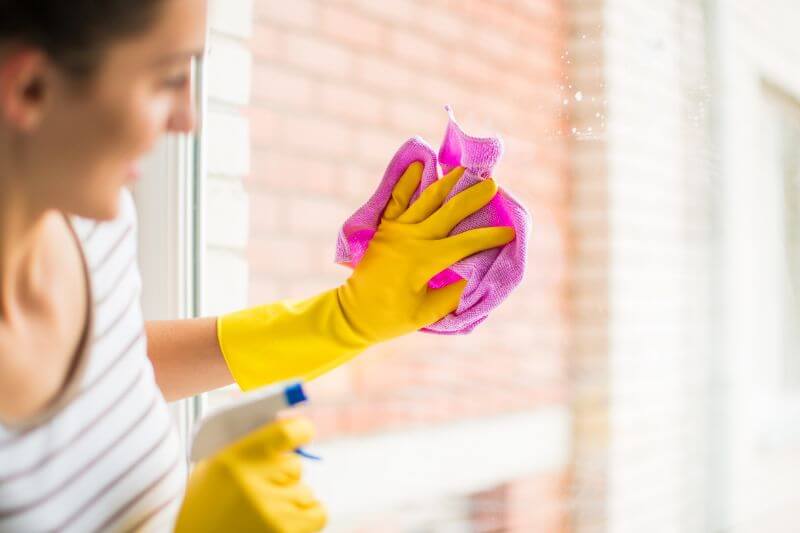This nasty fungus can pop up in any home. You’ll notice it on window frames and the adjacent sills, and it easily spreads to walls and ceilings. It can smell unpleasant, and it looks horrid.
More importantly, black mould causes health problems so you don’t want it hanging around.

How Does Black Mould Develop?
Black mould needs moisture to flourish. The spores are airborne and will find their way to damp areas in your home. This generally means your windows, which are often a source of condensation.
In cold weather, your heating keeps everything inside warm and cosy. However, your windows are always going to be thinner than your walls – even good-quality ones. Chilly temperatures mean cold windows; when warm interior air meets the cold glass, it turns into condensation.
This moisture causes the spores to develop, and before you know it you’ve got black mould everywhere.
Other Sources of Black Mould
There are several other ways that black mould can flourish.
- High levels of moisture: hot and humid weather, steam from cooking or showering.
- Inadequate ventilation: creates a damp atmosphere.
- Leaking pipes, damaged roofs, broken gutters: water seeps into nooks and crannies with no means of escape.
- Cracked and broken windowpanes, seals and frames: encourages moisture to creep in.
Can Black Mould Affect Your Health?
Yes, it can! When mould develops it produces toxins (the official name is mycotoxins), which are bacterial poisons. Black mould toxin is particularly bad for the lungs, skin and nervous system.
People with pre-existing conditions like asthma and eczema are particularly susceptible. Elderly folks, babies and children are most likely to experience health problems due to mould. However, this can lead to problems for anyone.
Black mould spores can set off allergic reactions leading to sinus problems, headaches, respiratory issues, runny noses, coughs and eye conditions. Anyone with a weak immune system is at risk of contracting something nasty (most likely a respiratory issue).

How to Remove Black Mould
Household bleach and warm water is the best method. Mix one part bleach with three parts water, and apply the solution with a soft brush. Once the mould is removed, dry the area with a clean cloth.
Ensure there’s plenty of ventilation as you work and leave the windows open once you’ve finished. That way everything can dry thoroughly. You must protect your skin and lungs from bleach and toxic spores, so remember to wear rubber gloves and a mask as you work.
You can buy special cleaning products to remove black mould but these may leave a stain behind. Also, if you’re cleaning a window, commercial mould removers can damage the seal. If you’re not certain about the best method, check with your local window supplier.
How to Stop It From Returning
The two main causes of black mould are condensation and leaks. Prevent excess moisture by keeping windows or trickle vents open as much as possible, and always use an extractor fan in the kitchen and bathroom.
Consider buying a dehumidifier to keep moisture in the air at bay. There’s a huge number available in a range of prices, so you’re sure to find one that works for you. Don’t forget that houseplants produce moisture so try to keep them away from the windows.
Replace Old or Broken Windows
Double-glazed windows have a gap between the two panes. This insulating layer makes the inner pane much warmer and helps reduce condensation.
The friendly folk at The Window Centre will help you find the best solution.

